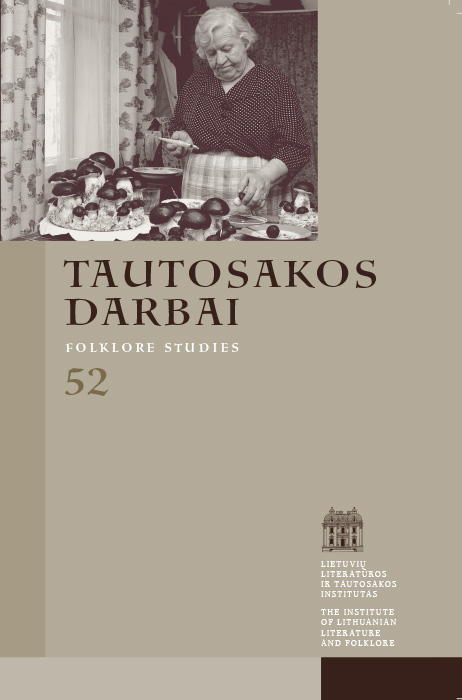Mato Pretorijaus mitinės medžiagos apie ąžuolą verifikacija
Santrauka
Straipsnyje apžvelgiama ir verifikuojama Mato Pretorijaus (MatthäusPrätorius) veikale „Prūsijos įdomybės, arba Prūsijos regykla“ (Deliciae Prussicae, oder Preussische Schaubühne, XVII a. pabaiga) pateikta mitinė informacija, tiesiogiai susijusi su ąžuolu. Lygia greta aptariamos žymesnių XX ir XXI a. tyrėjų, nagrinėjusių Pretorijaus užfiksuotą medžiagą apie ąžuolą, interpretacijos. Remiantis Pretorijaus užfiksuotų mitologinių duomenų apie ąžuolą analizės rezultatais, išskiriami penki pagrindiniai autoriaus interpretacinės sistemos bruožai. XX ir XXI a. tyrimų kontekstas atskleidė, jog ankstesnių laikotarpių mokslininkai nagrinėjamos Pretorijaus mitinės medžiagos patikimumo nesvarstė arba svarstė fragmentiškai. Tyrimas taip pat atskleidė Pretorijaus aprašytų mitinių duomenų, tiesiogiai susijusių su ąžuolu, nevienodo patikimumo tendenciją.
Atsisiuntimai
Skaitomiausi šio autoriaus(ų) straipsniai
- Žydrūnas Vičinskas, Mato Pretorijaus užfiksuotos mitologinės medžiagos apie šventes verifikacija: žolių ir gyvulių išvedimo laukan šventės , Tautosakos darbai: T 56 (2018)
